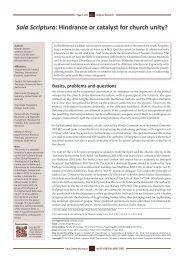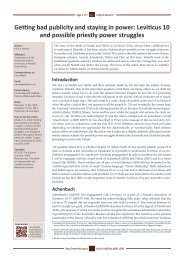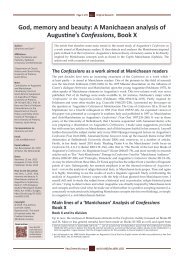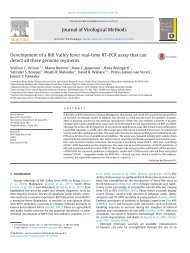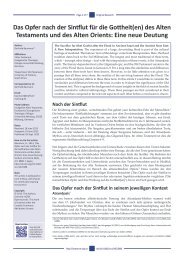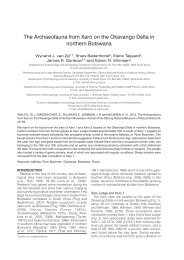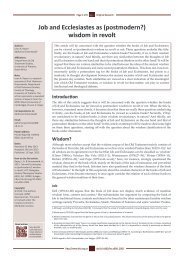View/Open - University of Pretoria
View/Open - University of Pretoria
View/Open - University of Pretoria
You also want an ePaper? Increase the reach of your titles
YUMPU automatically turns print PDFs into web optimized ePapers that Google loves.
Figure 1: Measures <strong>of</strong> homogeneity/heterogeneity <strong>of</strong> TALPS first pilot (Geldenhuys 2007:73)<br />
According to Geldenhuys (2007:73) the more heterogeneous items are, the less reliable<br />
the test can become. The factor analysis above indicates that in the case <strong>of</strong> TALPS there<br />
is a measure <strong>of</strong> heterogeneity: items 73 and items 62-66 are furthest away from the zero<br />
line. The test, however, still had a reliability measure <strong>of</strong> 0.85. The test designers chose<br />
to leave in these items, arguing that academic literacy is a “richly varied and potentially<br />
complex” (Weideman, 2009:237) ability and one would therefore have to “tolerate a<br />
more heterogeneous construct” (Weideman, 2009:237).<br />
Claim 4: The items on the test discriminate well between test takers.<br />
One other statistical measure rendered by the package used is the average Rit-values or<br />
the discriminative ability <strong>of</strong> the test items. One <strong>of</strong> the main purposes <strong>of</strong> a test is to be able<br />
to discriminate between the test-takers. According to Kurpius and Stafford (2006:115) a<br />
test cannot discriminate unless the items themselves discriminate between those who<br />
correctly answer the questions and those who do not. One <strong>of</strong> the main reasons to pilot<br />
a test is to determine which items discriminate well and which do not. Find below the<br />
average Rit-values for the TALPS pilots:<br />
183<br />
Journal for Language Teaching | Tydskrif vir Taalonderrig



